Toasted sesame oil is loaded with rich, nutty flavor that adds depth to stir-fries and marinades, while regular sesame oil has a more subtle taste, perfect for lighter dishes where you want other flavors to shine. Both offer incredible versatility, from Asian to non-Asian recipes, and provide health benefits with their antioxidants and nutrients. A little sesame oil goes a long way, so start small and adjust to your liking. Whether you choose toasted or regular, get ready to explore new culinary adventures – there's so much more to discover about this amazing ingredient!
Key Takeaways
- Toasted sesame oil has a robust, nutty flavor that enhances depth in stir-fries, marinades, and dipping sauces, while regular sesame oil has a more subtle taste suitable for lighter dishes.
- Toasted sesame oil is best used as a finishing oil, while regular sesame oil can be used for cooking at higher temperatures.
- Toasted sesame oil encourages experimentation in cooking styles and recipes, while regular sesame oil allows other flavors to shine.
- Both types of sesame oil are rich in antioxidants and provide nutritional benefits, but their flavor profiles result in different culinary applications.
- The decision between toasted and regular sesame oil depends on the desired flavor intensity and the type of dish being prepared.
History
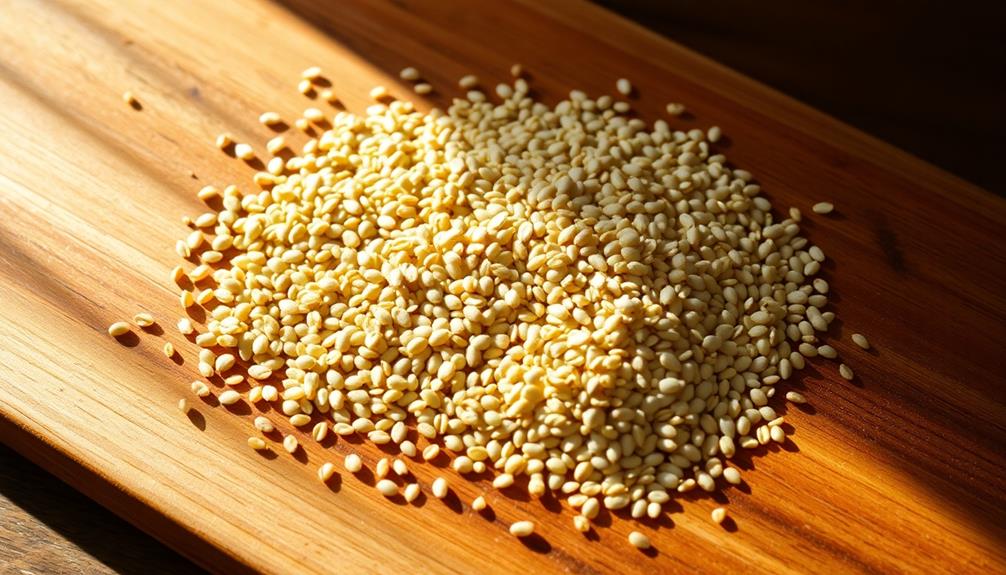
Throughout history, sesame oil has been a staple in many culinary traditions. In ancient Mesopotamia, sesame was one of the earliest known oilseed crops, cultivated as early as 3500 BC. The Egyptians, Greeks, and Romans all prized sesame oil for its unique flavor and health benefits.
In traditional Chinese medicine, sesame oil has been used for centuries to nourish the body and promote wellness. During the Middle Ages, sesame oil became an integral part of Middle Eastern and Mediterranean cuisines.
In India, it's been a beloved cooking oil for thousands of years, used in curries, dips, and religious ceremonies. Today, sesame oil remains a pantry staple in many Asian households, adding a nutty, aromatic touch to a variety of dishes.
Whether toasted or regular, sesame oil's rich history and versatility continue to make it a beloved ingredient around the world.
Recipe
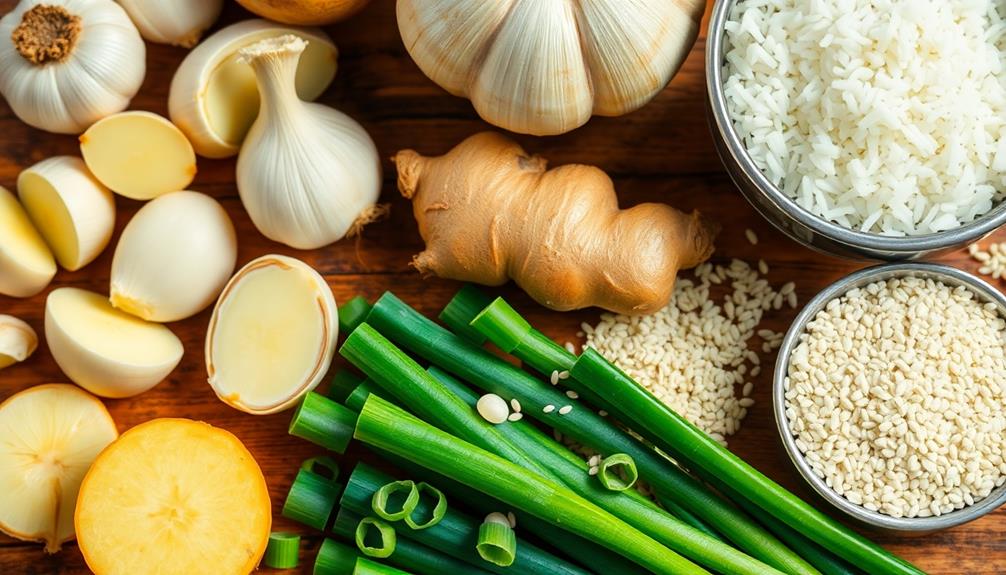
Sesame oil is a versatile ingredient that can add a rich, nutty flavor to a variety of dishes. When it comes to cooking with sesame oil, the type you choose can make a significant difference. Toasted sesame oil has a deeper, more intense flavor compared to regular sesame oil, which is milder and more delicate.
For those looking to enhance the nutritional value of their meals, consider incorporating ingredients like red lentils, which are high in protein and fiber.
In this recipe, we'll explore how to utilize the unique properties of toasted sesame oil to create a flavorful and aromatic dish.
Ingredients:
- 1 cup short-grain white rice
- 1 tablespoon toasted sesame oil
- 2 cloves garlic, minced
- 1 tablespoon grated ginger
- 2 cups chicken or vegetable broth
- 2 tablespoons soy sauce
- 1 teaspoon honey
- 1/4 cup sliced green onions
- 2 tablespoons toasted sesame seeds
Cooking Instructions:
In a medium saucepan, combine the rice and broth. Bring to a boil, then reduce heat to low, cover, and simmer for 18-20 minutes, or until the rice is tender and the liquid is absorbed. Fluff the rice with a fork and set aside.
In a large skillet or wok, heat the toasted sesame oil over medium heat. Add the minced garlic and grated ginger, and sauté for 1-2 minutes, or until fragrant. Add the cooked rice, soy sauce, and honey, and stir to combine. Cook for an additional 2-3 minutes, or until the rice is heated through and the flavors are well-integrated.
Remove the rice from heat and stir in the sliced green onions and toasted sesame seeds. Serve hot and enjoy the rich, nutty flavors of the toasted sesame oil.
Tips:
- Toasted sesame oil has a lower smoke point than regular sesame oil, so be mindful of the heat level when cooking to prevent burning.
- For a more intense sesame flavor, you can increase the amount of toasted sesame oil used in the recipe.
- Serve this dish alongside grilled or stir-fried meats, or as a side dish to complement other Asian-inspired meals.
Cooking Steps
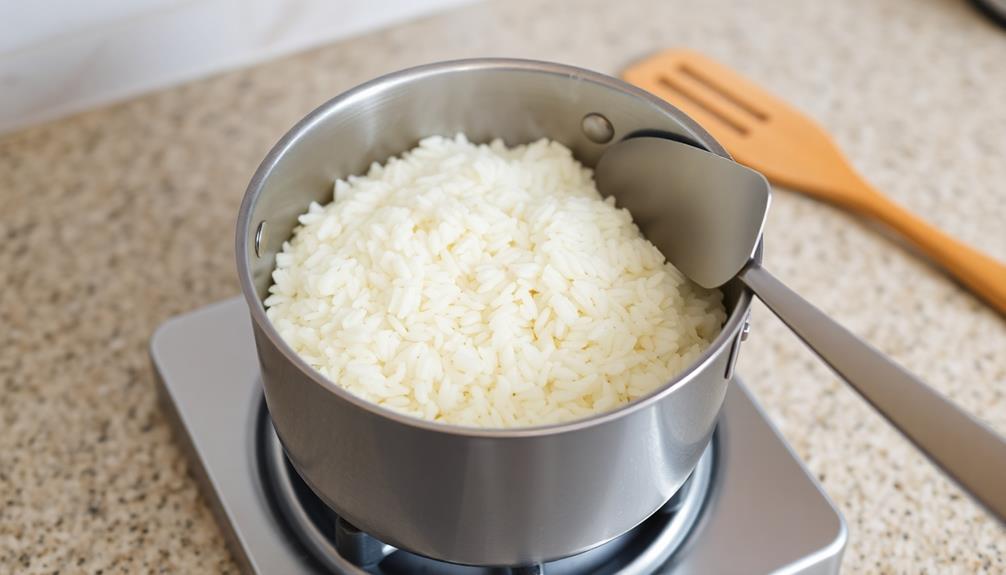
Warm up the oil over medium heat.
Once it's hot, toss in the sesame seeds and let them sizzle until they're fragrant.
Carefully strain the oil, then let it cool just a bit before using it in your recipes.
Step 1. Warm Oil Over Medium Heat

Next, you'll want to warm the oil over medium heat. This is a crucial step that helps to bring out the rich, nutty flavor of sesame oil.
Place your pan on the stove and turn the heat to medium. Once the pan is hot, carefully pour in the sesame oil. You'll know the oil is ready when it starts to shimmer and release its aroma.
Be sure to keep a close eye on the oil, as it can burn quickly. Gently swirl the pan to evenly distribute the heat. This helps the oil warm up gradually without scorching.
Once the oil is warm and fragrant, you're ready to add your other ingredients. This simple step sets the stage for the rest of your cooking process, ensuring your dish is infused with the delightful essence of sesame.
Get ready to experience the full flavor potential of this versatile cooking oil!
Step 2. Add Sesame Seeds to the Oil
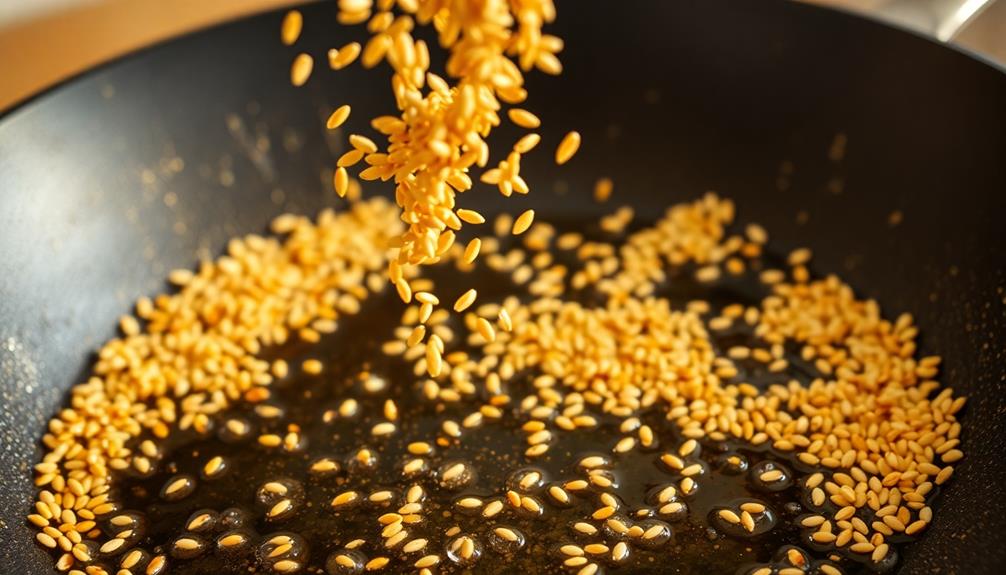
Once the oil is warm and fragrant, you'll want to add the sesame seeds. Toss the seeds into the pan and let them sizzle. You'll know they're ready when they turn golden brown and release a delightful nutty aroma. Be careful not to let them burn, as that can make the oil taste bitter.
Now, here's where the fun begins! You can choose between toasted or regular sesame seeds. Toasted seeds will give your dish a deeper, more pronounced sesame flavor, while regular seeds will have a milder taste. Experiment and see which one you prefer.
Once the seeds are perfectly toasted, remove the pan from the heat. The residual warmth will continue to toast the seeds, so keep a close eye on them.
Now your sesame oil is ready to use in all sorts of delicious recipes, from stir-fries to dressings and marinades. Get ready to enjoy the rich, nutty goodness of sesame oil!
Step 3. Cook Until Fragrant
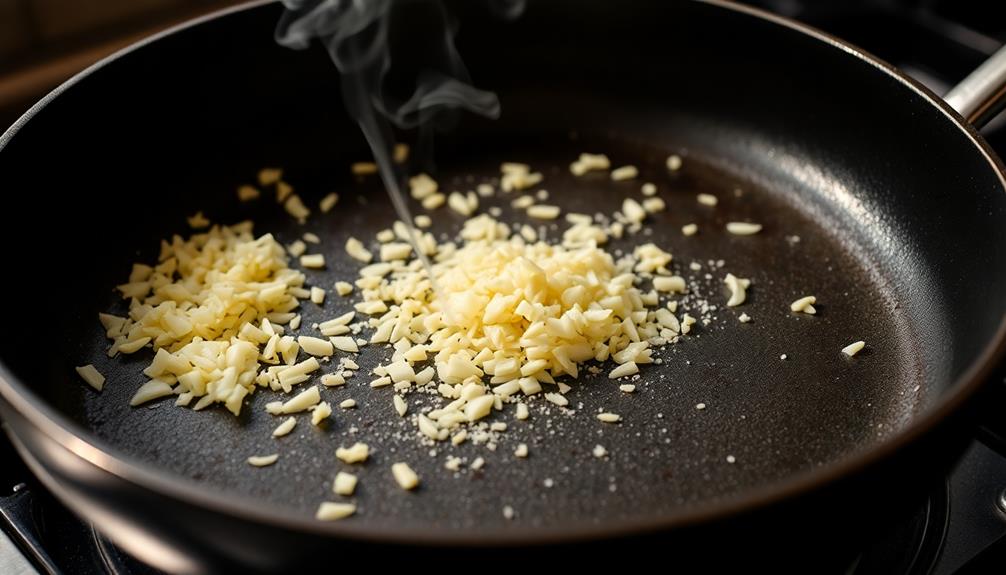
Now that you've added the sesame seeds, it's time to let them do their thing. Grab your pan and get it heating up over medium heat.
Once it's nice and hot, toss in those seeds and let them sizzle! You'll know they're ready when that delightful, nutty aroma starts wafting through the air. Don't be afraid to give the pan a little shake or stir now and then – you want to make sure those seeds get evenly toasted.
As the seeds toast, you'll start to see them turn a gorgeous golden brown. This is where the magic happens! The heat brings out all the incredible flavors locked inside the seeds, creating a depth of taste that's simply irresistible.
Keep an eye on them, though – you don't want them to burn. Once they're fragrant and lightly browned, you're good to go! Scoop them out of the pan and into your oil.
Now you're ready to take your sesame oil to new flavor heights.
Step 4. Strain the Oil and Seeds

After toasting the sesame seeds, you'll want to strain the oil and seeds.
Grab a fine-mesh sieve or colander and place it over a clean bowl. Carefully pour the hot oil and toasted sesame seeds into the sieve. The oil will drip through, leaving the crunchy seeds behind. Make sure to get every last drop of that delicious oil!
Once strained, you can transfer the oil to a storage container. The toasted sesame seeds can be saved and used as a crunchy topping for dishes like salads, stir-fries, or even sprinkled on top of rice. Aren't those little seeds just the cutest?
Now that you've got your freshly strained sesame oil, you can start drizzling it over your favorite foods. The toasted flavor will add an extra layer of nutty deliciousness.
Get ready to impress your family and friends with your newfound sesame oil expertise!
Step 5. Allow to Cool Slightly
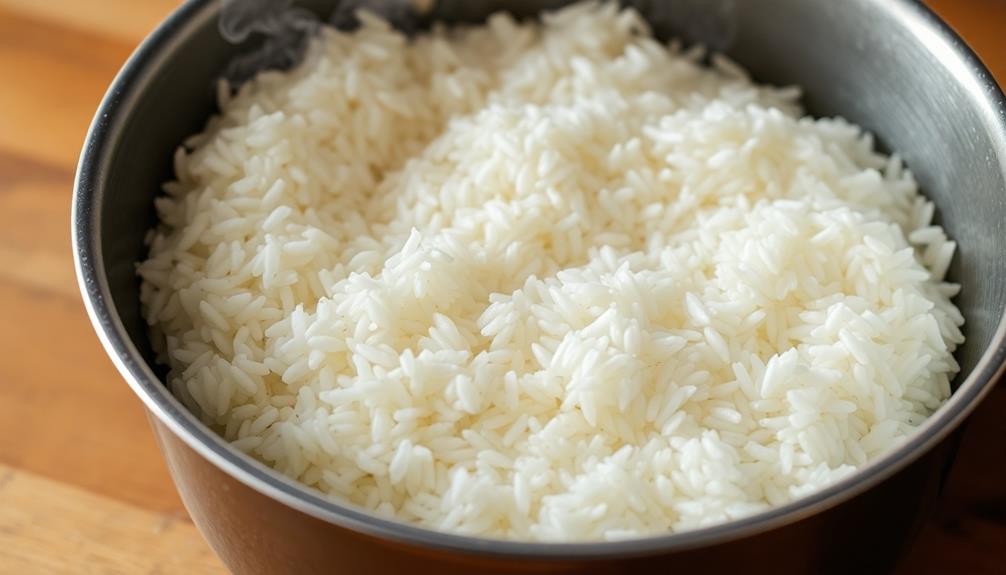
Allow the strained sesame oil to cool slightly before transferring it to your storage container. You don't want to pour the hot oil directly into the bottle, as that could cause it to splatter or crack the glass.
Take a few minutes to let it sit and come down in temperature. This gentle cooling process helps preserve the oil's delicate flavor and aroma.
Once it's no longer scalding hot, you can carefully pour the sesame oil into your chosen storage vessel. Glass bottles or jars work great, as they won't react with the oil.
Secure the lid tightly to keep out any air or contaminants. Then, you're all set to enjoy your freshly strained and cooled sesame oil!
Whether you plan to drizzle it over a stir-fry, use it for dipping sauces, or incorporate it into your favorite recipes, this flavorful oil will take your cooking to new heights.
Final Thoughts
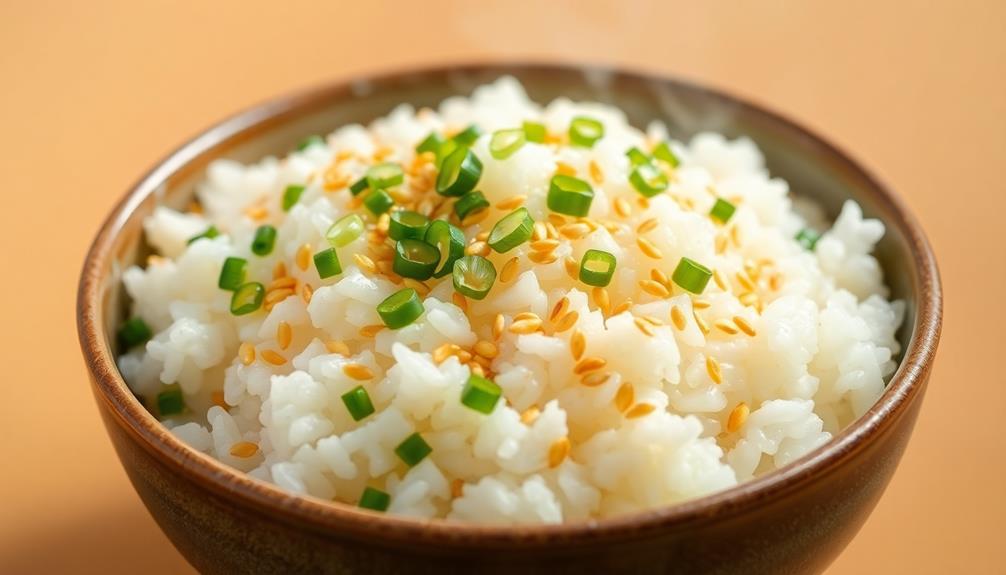
When it comes to choosing between toasted and regular sesame oil, the decision ultimately rests on your personal preferences and the specific dish you're preparing.
Toasted sesame oil, with its rich, nutty flavor, is perfect for adding a delightful depth to stir-fries, marinades, and dipping sauces. Regular sesame oil, on the other hand, has a more subtle taste, making it ideal for recipes where you want the other flavors to shine.
Whether you opt for toasted or regular, both varieties of sesame oil offer a wealth of health benefits. They're packed with antioxidants, vitamins, and minerals that can support your overall well-being.
Plus, a little goes a long way, so you can enjoy the flavors and the nutritional boost in every dish.
Ultimately, the choice is yours! Experiment with both types of sesame oil to discover which one best suits your culinary preferences and the needs of your recipe.
Get creative and have fun exploring the versatility of this versatile ingredient.
Frequently Asked Questions
Is Toasted Sesame Oil Healthier Than Regular Sesame Oil?
Toasted sesame oil has a stronger, nuttier flavor compared to regular sesame oil. While both are healthy, toasted sesame oil may contain slightly more antioxidants due to the toasting process. However, the difference in health benefits is minimal.
Can I Substitute Toasted Sesame Oil for Regular Sesame Oil?
You can substitute toasted sesame oil for regular sesame oil, but the flavor profile will be different. Toasted sesame oil has a stronger, nuttier taste compared to the milder flavor of regular sesame oil.
How Long Does Toasted Sesame Oil Last Compared to Regular?
Toasted sesame oil typically has a longer shelf life compared to regular sesame oil, lasting up to a year when stored properly in a cool, dark place. The toasted flavor also tends to be more pronounced and robust.
What Dishes Are Best Suited for Toasted Sesame Oil?
Toasted sesame oil is best used for dishes that can highlight its rich, nutty flavor, such as stir-fries, marinades, dressings, and dips. It adds depth and complexity to Asian-inspired recipes, complementing ingredients like soy sauce, garlic, and ginger.
Can I Use Toasted Sesame Oil for High-Heat Cooking?
You can use toasted sesame oil for high-heat cooking, but it's not recommended. The high heat can cause the oil to burn and develop a bitter taste. It's better to use regular sesame oil for high-heat cooking.










